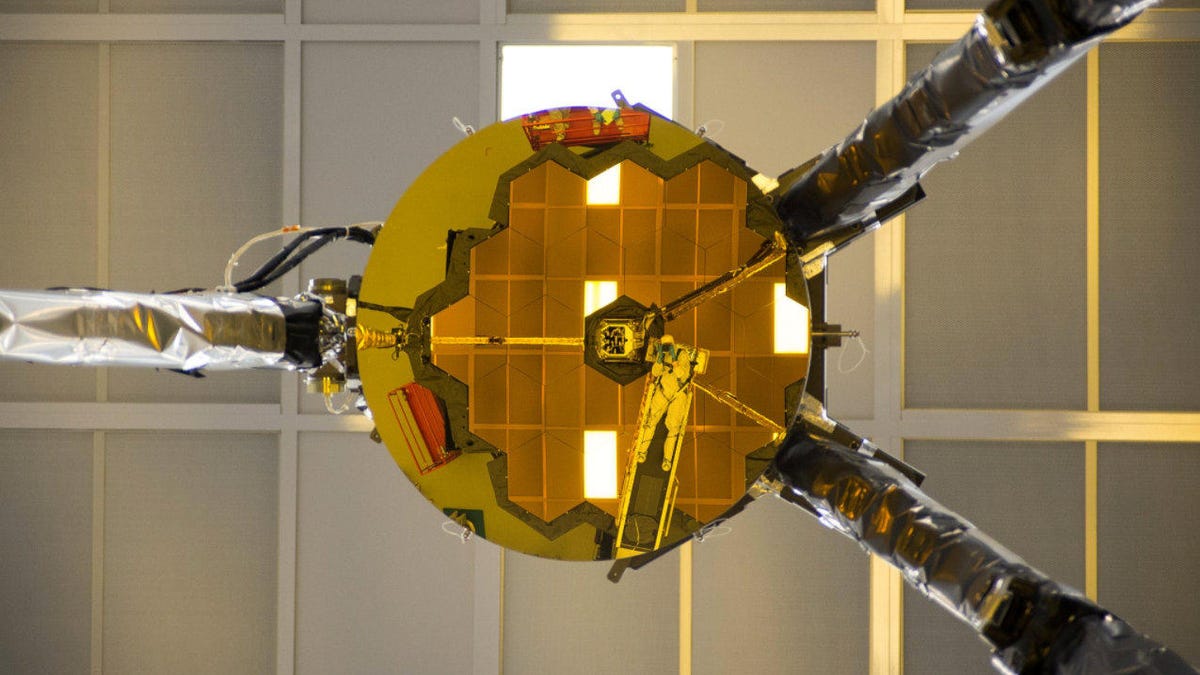Launch of NASA's James Webb Space Telescope pushed back yet again
The successor to Hubble has been in the works for a decade, including almost two-and-a-half years of delays.
Here's a space-related selfie that happened right here on Earth. You can see Ball Aerospace optical engineer Larkin Carey reflected on the gold surface of the James Webb Space Telescope's secondary mirror during testing in 2017. The Webb will eventually take over for Hubble.
Three months after announcing another delay of the launch of the James Webb Space Telescope, NASA said Wednesday that the next generation observatory's debut has slipped yet again. The space agency has set a new launch date for the JWST of March 30, 2021.
NASA had set a launch date of October 2018 all the way back in 2011. But as the date nears, blast-off has been pushed back multiple times; first to 2019, then to 2020 in March of this year, and now to early 2021.
JWST has been hampered by delays and cost overruns even going back further than 2011, to shortly after the project was formally approved in 2008.
NASA science head Thomas Zurbuchen told reporters on a conference call Wednesday that the JWST "will be the agency's next great space observatory ... development should move forward because of its potential and the spectacular science it will return."
The JWST, which is being built primarily by Northrop Grumman, is NASA's great hope for carrying on the legacy of the Hubble Space Telescope and answering some of the biggest questions in science, including whether we're alone in the universe. The Webb observatory is significantly larger and more powerful than Hubble, with more than six times the light-collecting surface area of its predecessor's primary mirror.
The new launch date comes in response to a report from the JWST Independent Review Board (IRB), which recommends that the mission should continue, but also emphasizes the importance of getting it right.
"The complexity and risk cannot be overstated and overestimated," Thomas Young, chair of the IRB, told reporters.
Young explained that what now amounts to 29 months of delays can be attributed to a combination of human error, problems embedded in hardware, lack of experience, excessive optimism and the complex systems involved.
In particular, Young highlighted three instances of human error, such as using the wrong solvent to clean valves. He said that the errors could have been easily avoided with some basic fixes.
"All simple fixes that were not implemented resulted in a one-and-a-half year delay at a cost of over 600 million dollars," he said.
Another persistent problem for the JWST has been the telescope's large, complicated sunshield, a type that's never been used before on a space telescope. The entire telescope, including the thin, tennis court-sized shield, have to be unfolded like Origami once in space, and engineers have discovered problems that could lead to the shield snagging or tearing in the process.
The IRB report included over two dozen recommendations, many of which Zurbuchen says NASA has already begun implementing.
"We have to get this right on the ground before we go to space," he said. "Webb is worth the wait."
Crowd Control: A crowdsourced science fiction novel written by CNET readers.
Solving for XX: The tech industry seeks to overcome outdated ideas about "women in tech."


